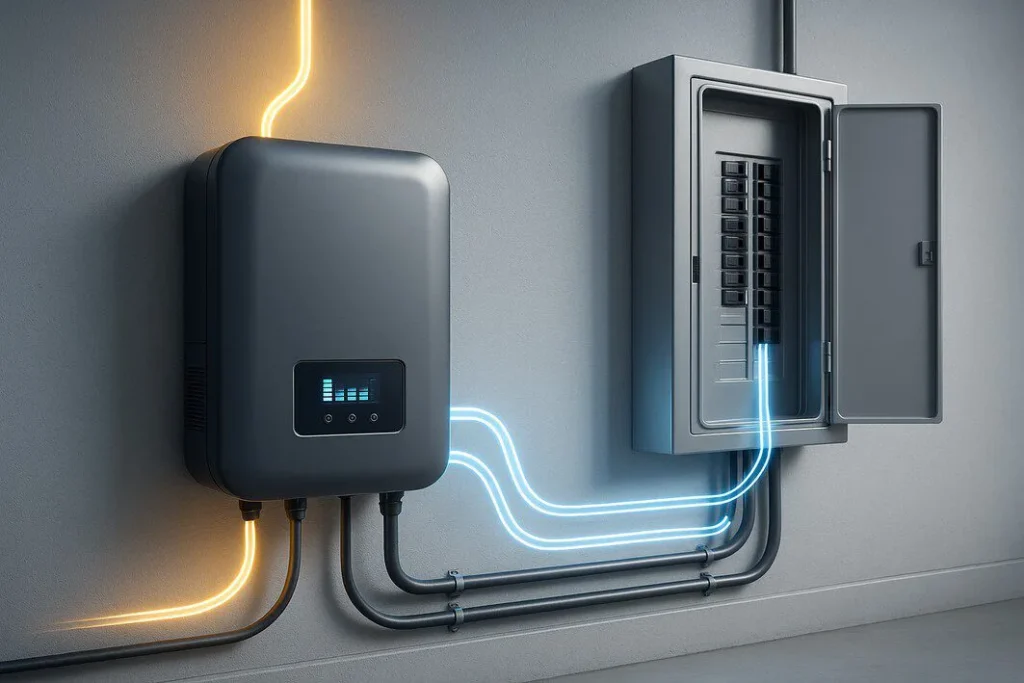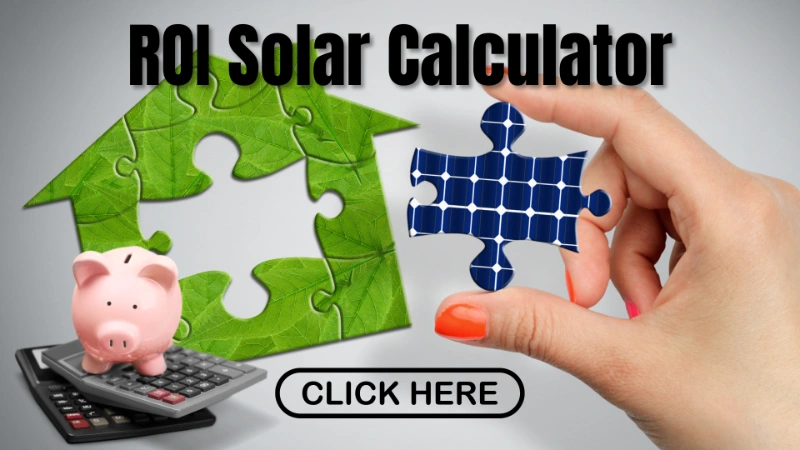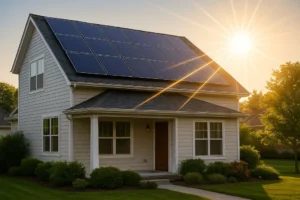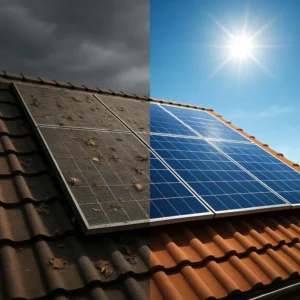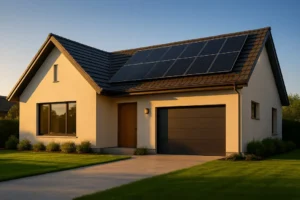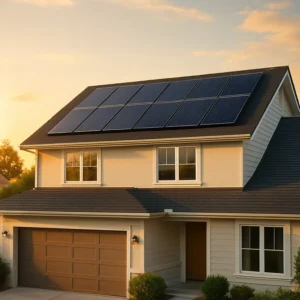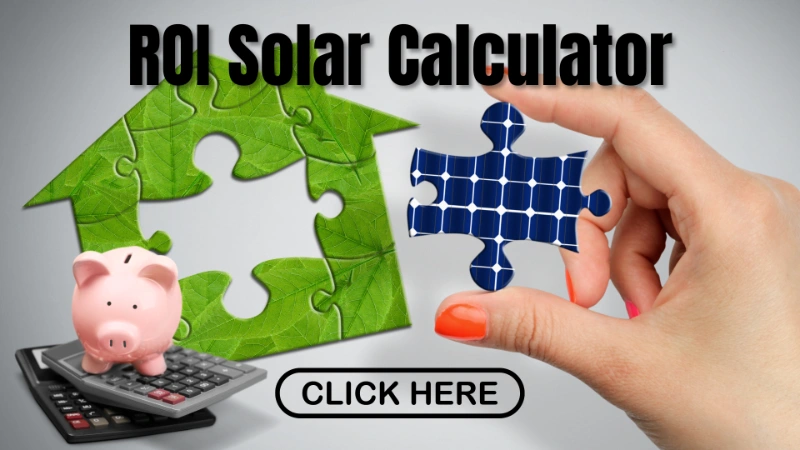When planning a residential solar system, most of the attention goes to the sleek, dark panels on the roof. While panels are the face of your system, the unsung hero working behind the scenes is the solar inverter. This critical component is the brain of your operation, and its performance directly impacts how much money you save and how much clean energy you generate. Understanding solar inverter efficiency is not just for tech enthusiasts; it’s essential for any homeowner looking to maximize their solar investment.
Table of Contents
- What is a Solar Inverter and Why Does It Matter?
- Understanding Solar Inverter Efficiency Ratings
- Key Types of Solar Inverters: A Head-to-Head Comparison
- Factors That Influence Real-World Inverter Performance
- How to Choose the Best Solar Inverters for Your Home
- Making an Informed Decision with RenewGenius
A high-quality solar inverter can be the difference between a good solar system and a great one. In this guide, we’ll break down everything you need to know, from deciphering efficiency ratings to comparing the most common types of inverters on the market. Our goal is to equip you with the knowledge to make a confident and informed decision.
What is a Solar Inverter and Why Does It Matter?
At its core, a solar inverter has one primary job: to convert the direct current (DC) electricity generated by your solar panels into alternating current (AC) electricity. AC is the standard form of electricity used to power the lights, appliances, and electronics in your home.
Without an inverter, the energy captured by your panels would be unusable for your household needs. But its role goes beyond simple power conversion. Modern inverters also provide:
- System Monitoring: They track your system’s energy production, allowing you to see how your investment is performing in real-time.
- Grid Interaction: They manage the flow of electricity between your home, your solar panels, and the utility grid.
- Safety and Diagnostics: They ensure the system is operating safely and can shut it down if a fault is detected.
Because it handles every watt of power your panels produce, its efficiency is paramount.
Understanding Solar Inverter Efficiency Ratings
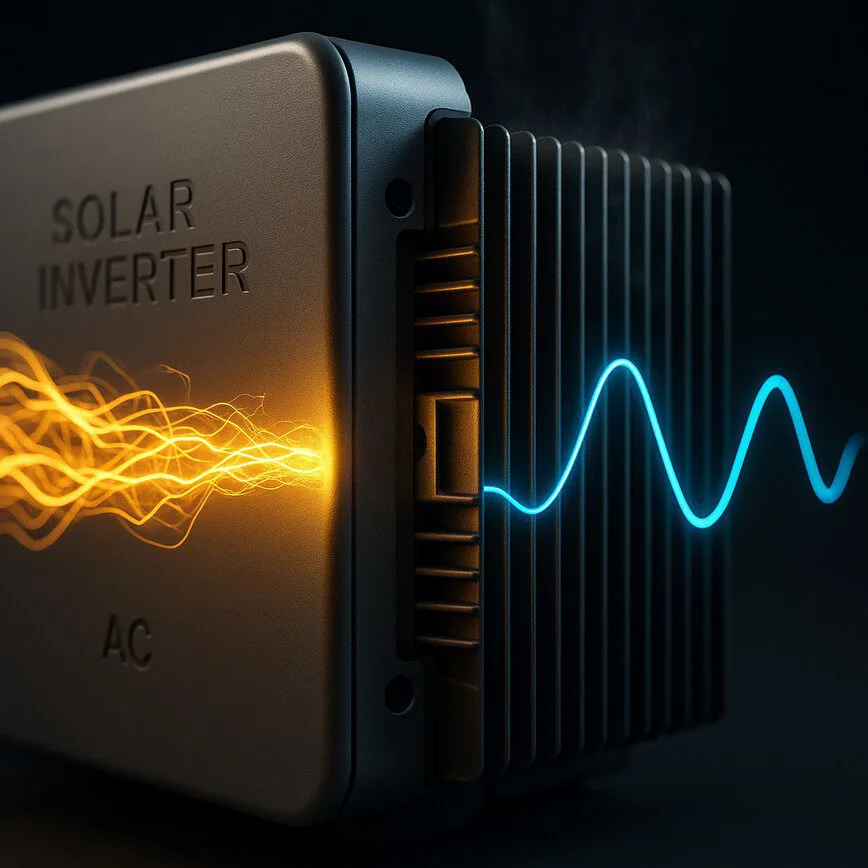
Solar inverter efficiency is expressed as a percentage. This number tells you how much of the DC power from the panels is successfully converted into usable AC power. For example, an inverter with 97% efficiency means that for every 1,000 watts of DC power it receives, 970 watts of AC power are made available to your home, with 30 watts lost as heat during the conversion process.
When you look at spec sheets, you’ll likely see two ratings:
- Peak Efficiency: This is the highest efficiency the inverter can achieve under ideal laboratory conditions. While it’s a useful number, your system will rarely operate at this peak level.
- Weighted Efficiency (CEC or Euro): This is a much more realistic and important metric. It represents the average efficiency across a range of weather conditions and power outputs, giving you a better idea of how the inverter will perform in the real world. Always prioritize weighted efficiency when comparing models.
Key Types of Solar Inverters: A Head-to-Head Comparison
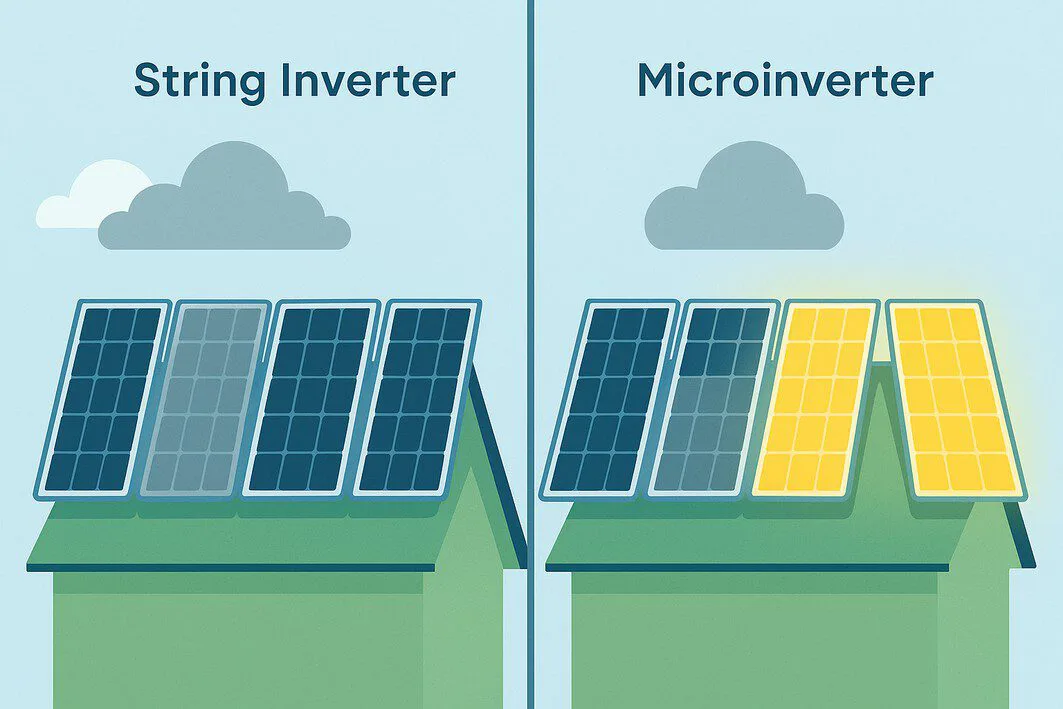
The biggest decision you’ll make regarding your inverter is its type. The difference between string and microinverters is a crucial topic, as each has significant implications for your system’s cost, performance, and design.
String Inverters
A string inverter is the most common and traditional type. It connects a series of solar panels (a “string”) to a single, centralized inverter unit, which is typically installed in your garage or on an exterior wall.
- Pros:
- Cost-Effective: Fewer components generally mean a lower upfront cost.
- Simpler Maintenance: With only one unit to worry about, troubleshooting and service are often more straightforward.
- Cons:
- Shading Issues: If one panel in the string is shaded or underperforming (due to debris or a fault), the output of the entire string is reduced to the level of that weakest panel.
- Single Point of Failure: If the central inverter fails, your entire solar energy system stops producing power until it’s repaired or replaced.
Microinverters
Microinverters represent a more advanced, decentralized approach. A small microinverter is installed directly beneath each individual solar panel on your roof. Each one converts DC to AC power right at the source.
- Pros:
- Panel-Level Optimization: Since each panel operates independently, shading or poor performance on one panel doesn’t affect the others. This is ideal for complex roofs or those with partial shading.
- Enhanced Monitoring: You can track the performance of each individual panel.
- Redundancy: If one microinverter fails, the rest of the system continues to produce power.
- Cons:
- Higher Upfront Cost: The cost per watt is typically higher due to the number of units required.
- Complex Maintenance: While failures are rare, replacing a unit on the roof is more complex than servicing a single string inverter on the ground.
Power Optimizers (with String Inverters)
Power optimizers offer a hybrid solution. Like microinverters, a small optimizer is attached to each panel to optimize its DC output. However, they don’t convert the power to AC. Instead, the optimized DC electricity is sent to a central string inverter for final conversion. This gives you panel-level optimization without the full cost of a microinverter system.
Factors That Influence Real-World Inverter Performance
Beyond the type and its rated efficiency, other factors can impact your inverter’s output:
- Temperature: Inverters generate heat. If not installed in a cool, well-ventilated area, they can overheat, which temporarily reduces their efficiency to protect internal components.
- Inverter Sizing: The inverter’s capacity must be properly matched to your solar array’s output. An improperly sized inverter will “clip” energy production, wasting potential savings.
- Age: Like all electronics, inverters degrade over time. Most top-tier inverters come with warranties ranging from 10 to 25 years and are designed to maintain high efficiency throughout their lifespan.
How to Choose the Best Solar Inverters for Your Home
Selecting the best solar inverters for your system depends on your unique situation. Here’s how to decide:
Assess Your Roof and Shading
- Simple, Unshaded Roof: A high-quality string inverter is often the most cost-effective and reliable choice.
- Complex Roof or Partial Shading: If you have dormers, vents, or nearby trees that cast shadows during the day, a microinverter or power optimizer system will yield significantly more energy over the system’s lifetime.
Consider Your Budget and Long-Term Goals
While string inverters have a lower upfront cost, the enhanced energy production from microinverters in certain scenarios can lead to a better long-term return on investment. As a company focused on residential solar solutions, we believe in empowering homeowners. Using an ROI calculator can help you model these differences and see which option provides the best financial outcome for you over 25+ years.
Look at Warranty and Brand Reputation
An inverter is a long-term investment. Choose brands known for reliability and backed by a strong warranty (12-25 years is the standard for premium models).
Making an Informed Decision with RenewGenius
Choosing the right solar inverter is just as important as choosing the right panels. The efficiency and type of inverter you select will define your system’s performance for decades to come.
At RenewGenius, we pride ourselves on our comprehensive solar knowledge base, designed to help you understand every aspect of your investment. Your solar system is more than just panels and an inverter; it’s an ecosystem of components working together. To learn more, explore our detailed guides on other essential solar components, like batteries and racking, that complete your home energy system. We’re here to help you navigate the options and build the most efficient and valuable solar solution for your home.

